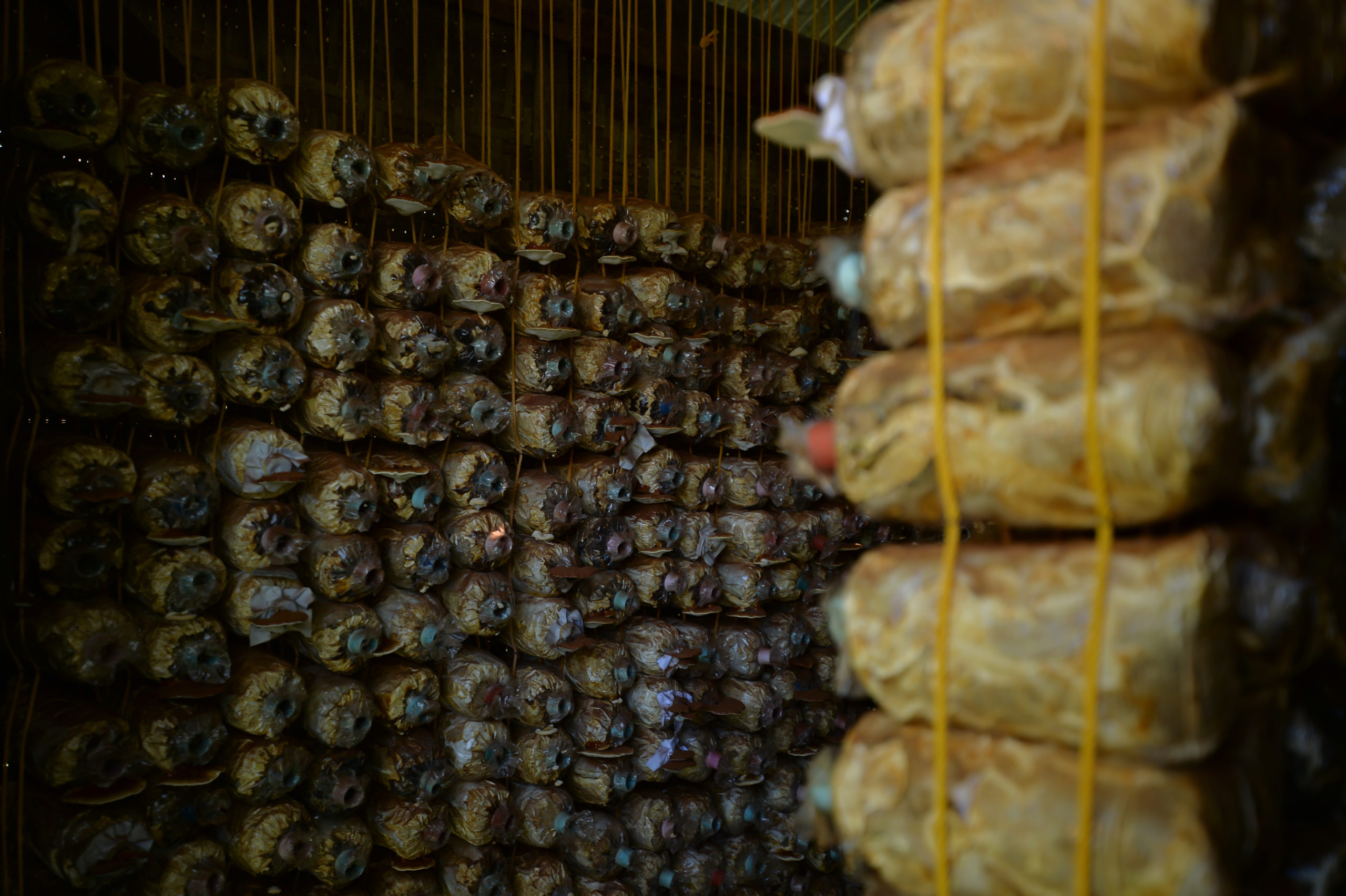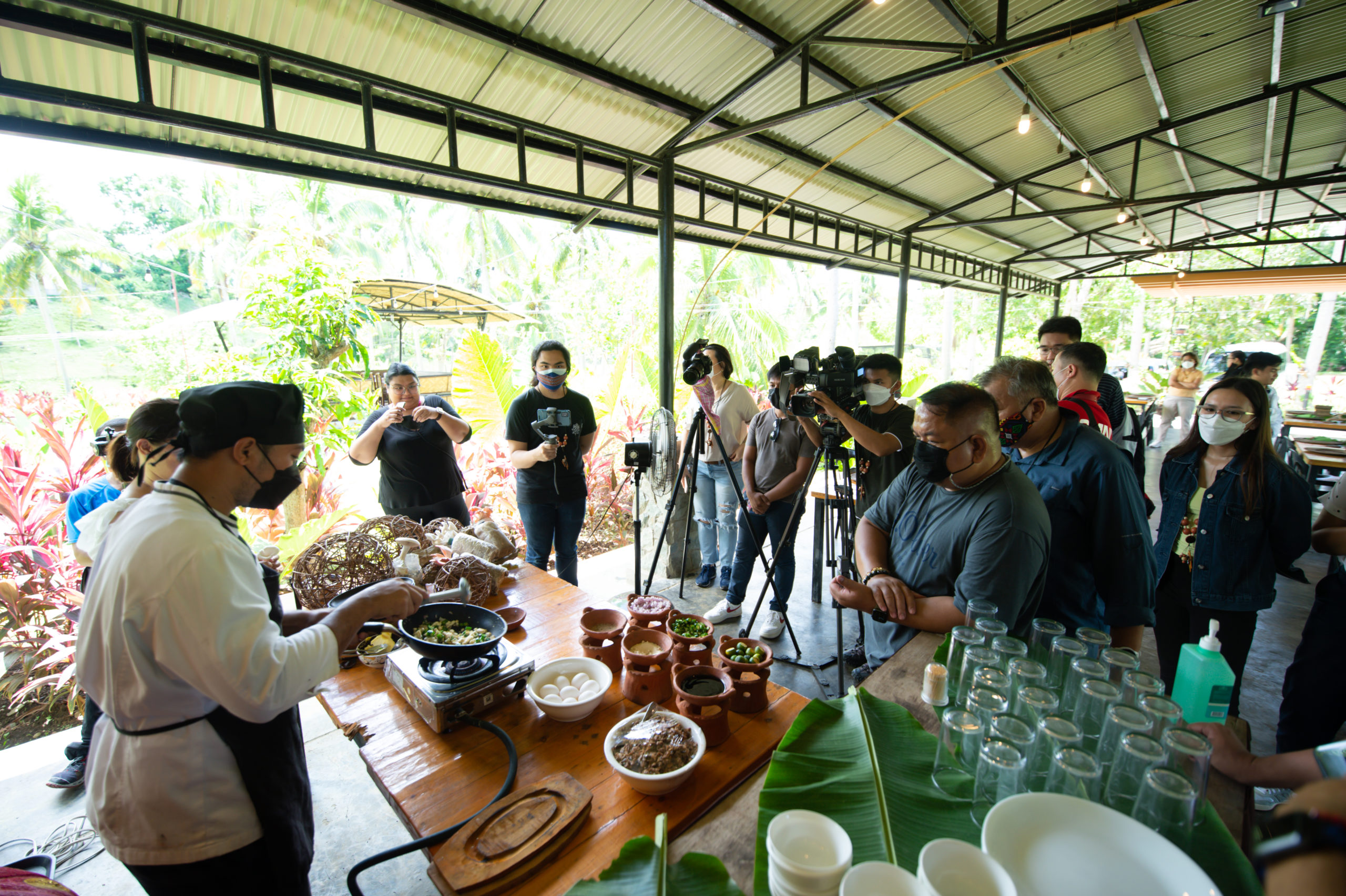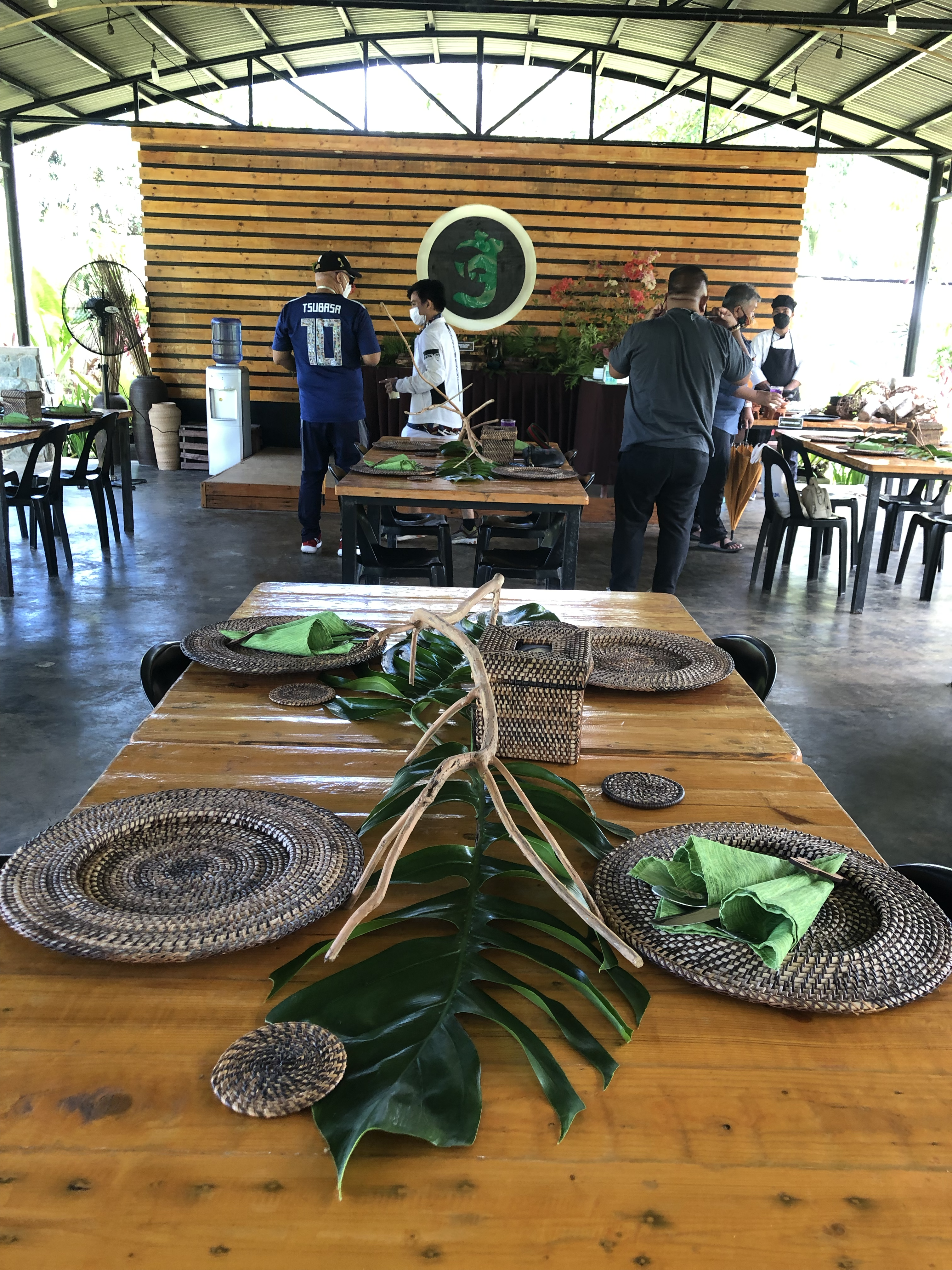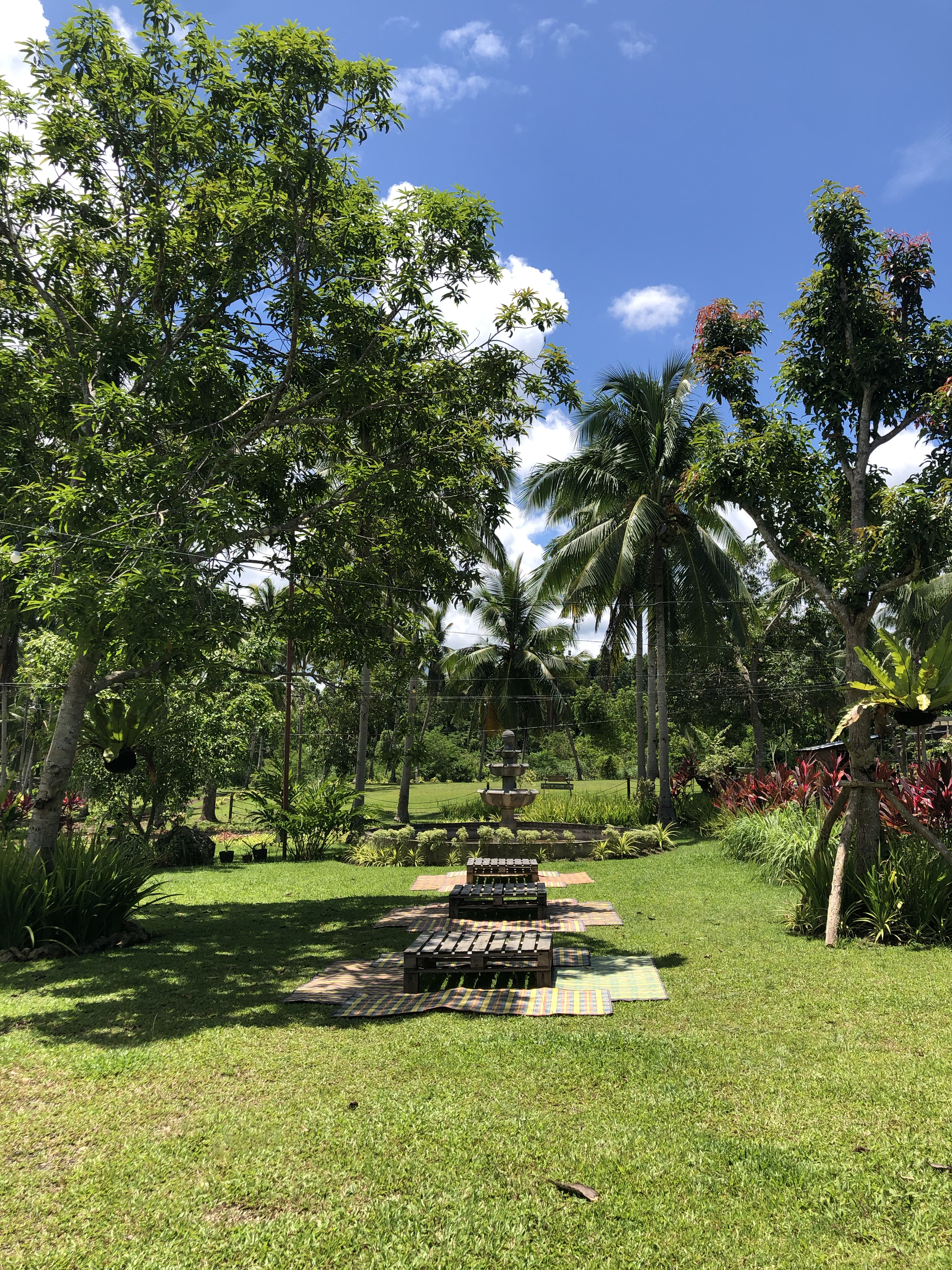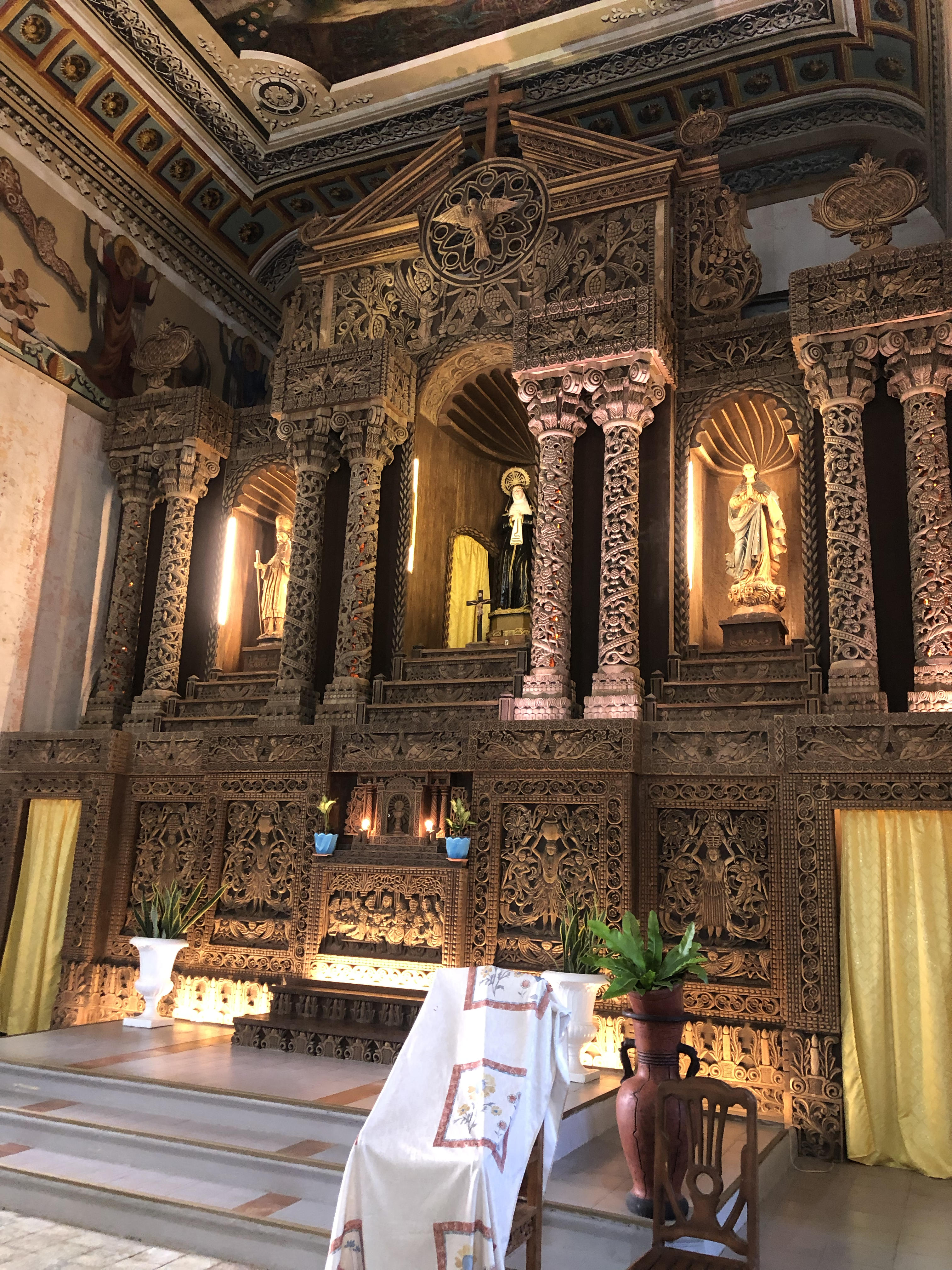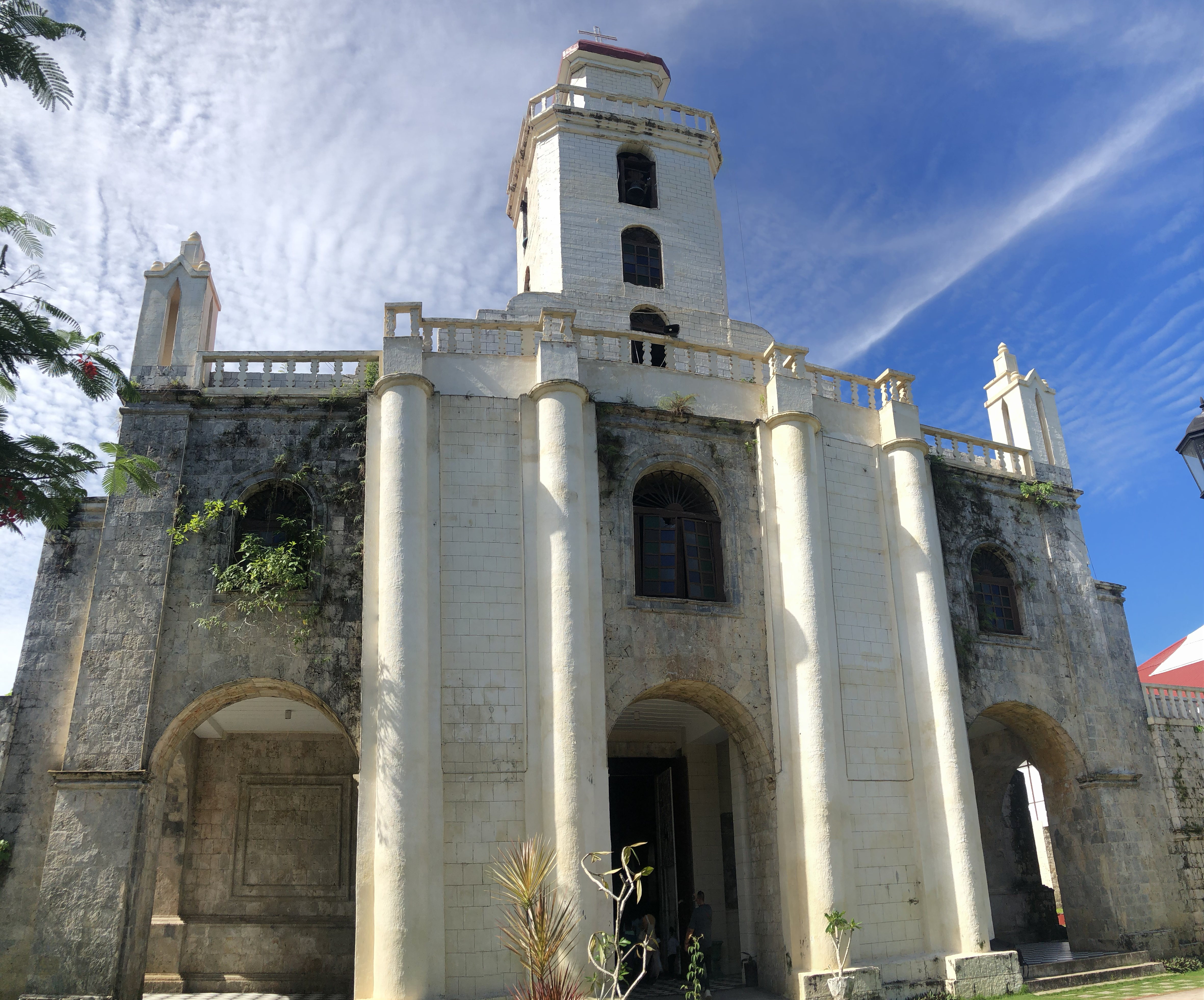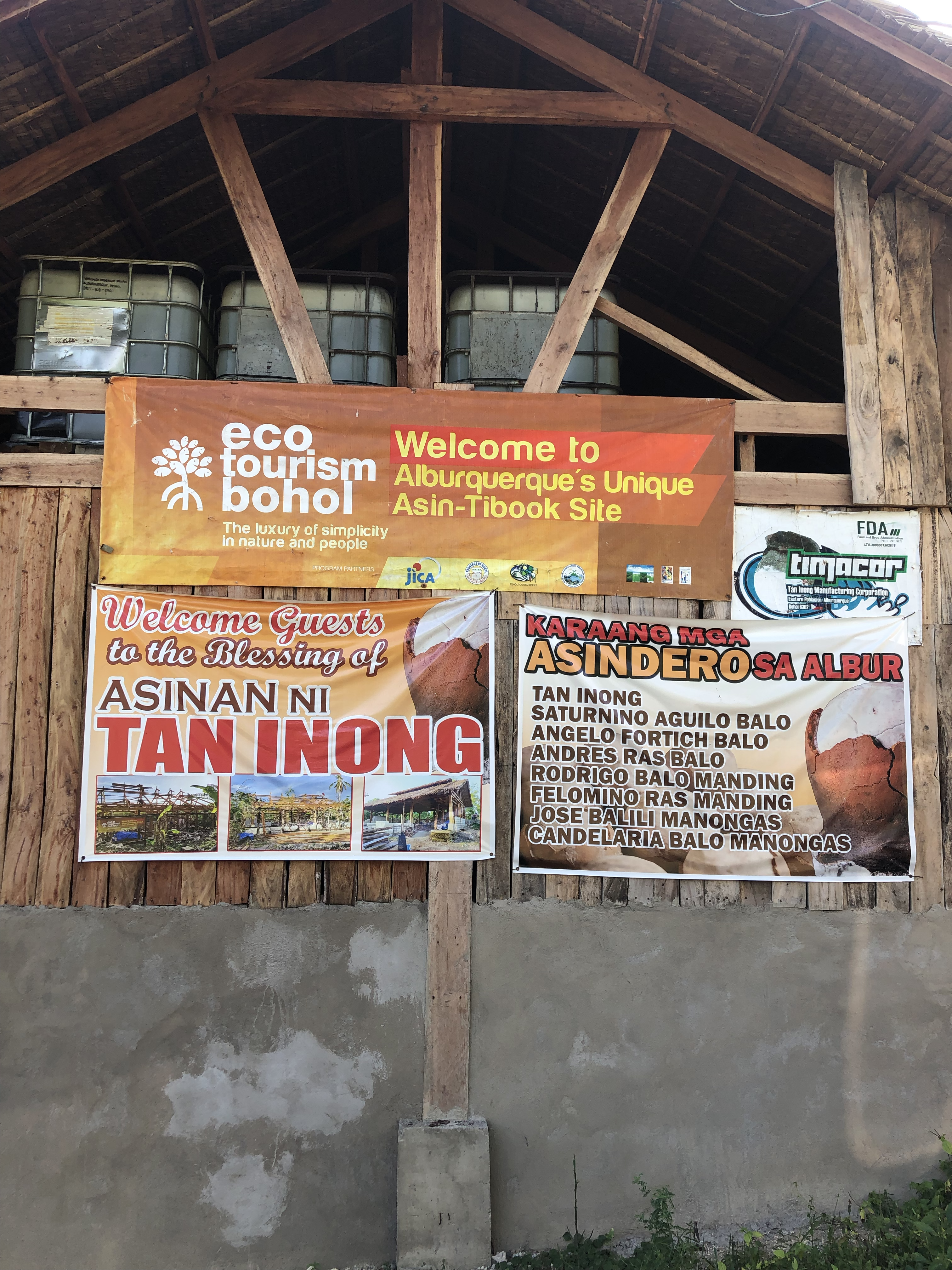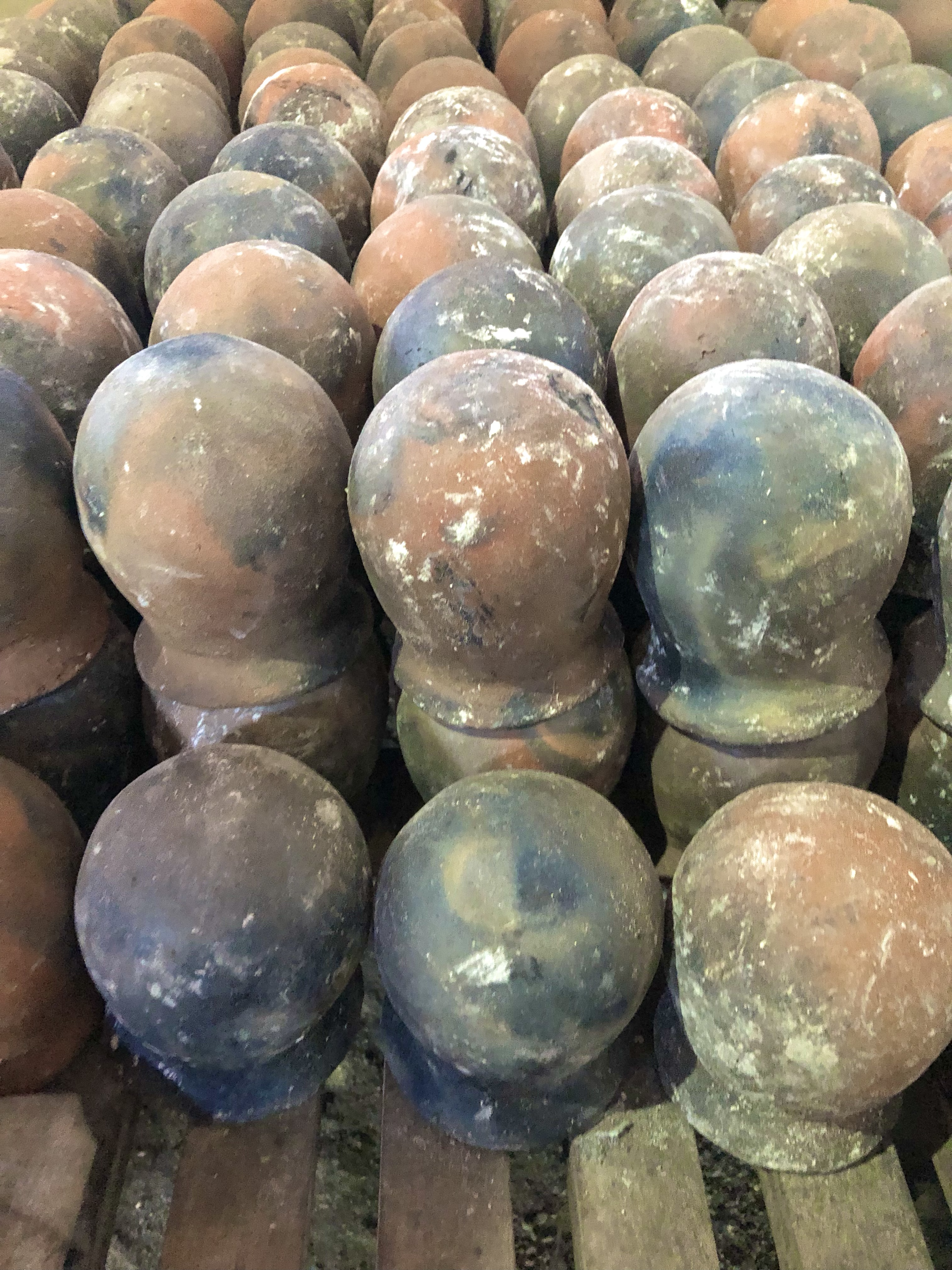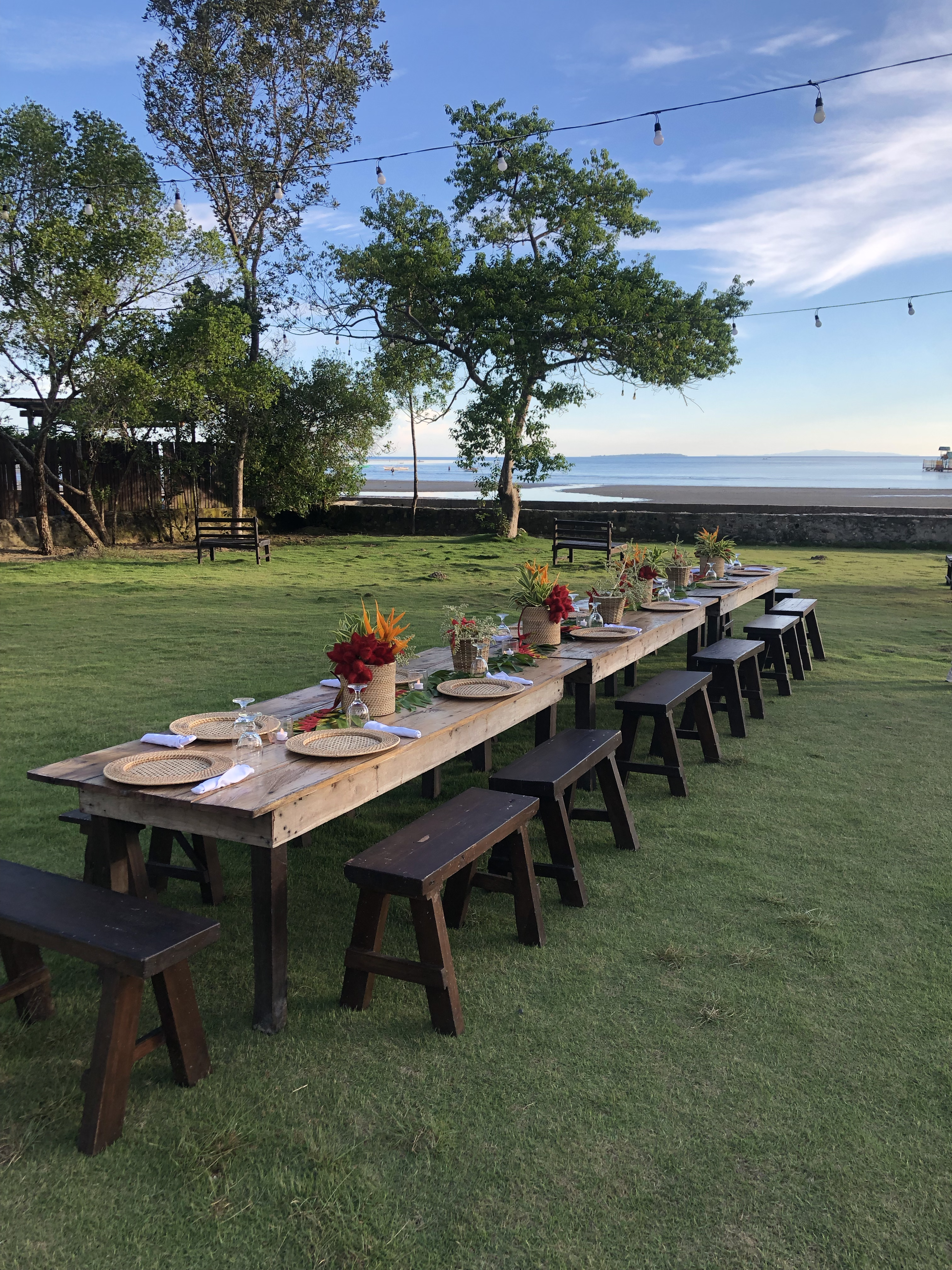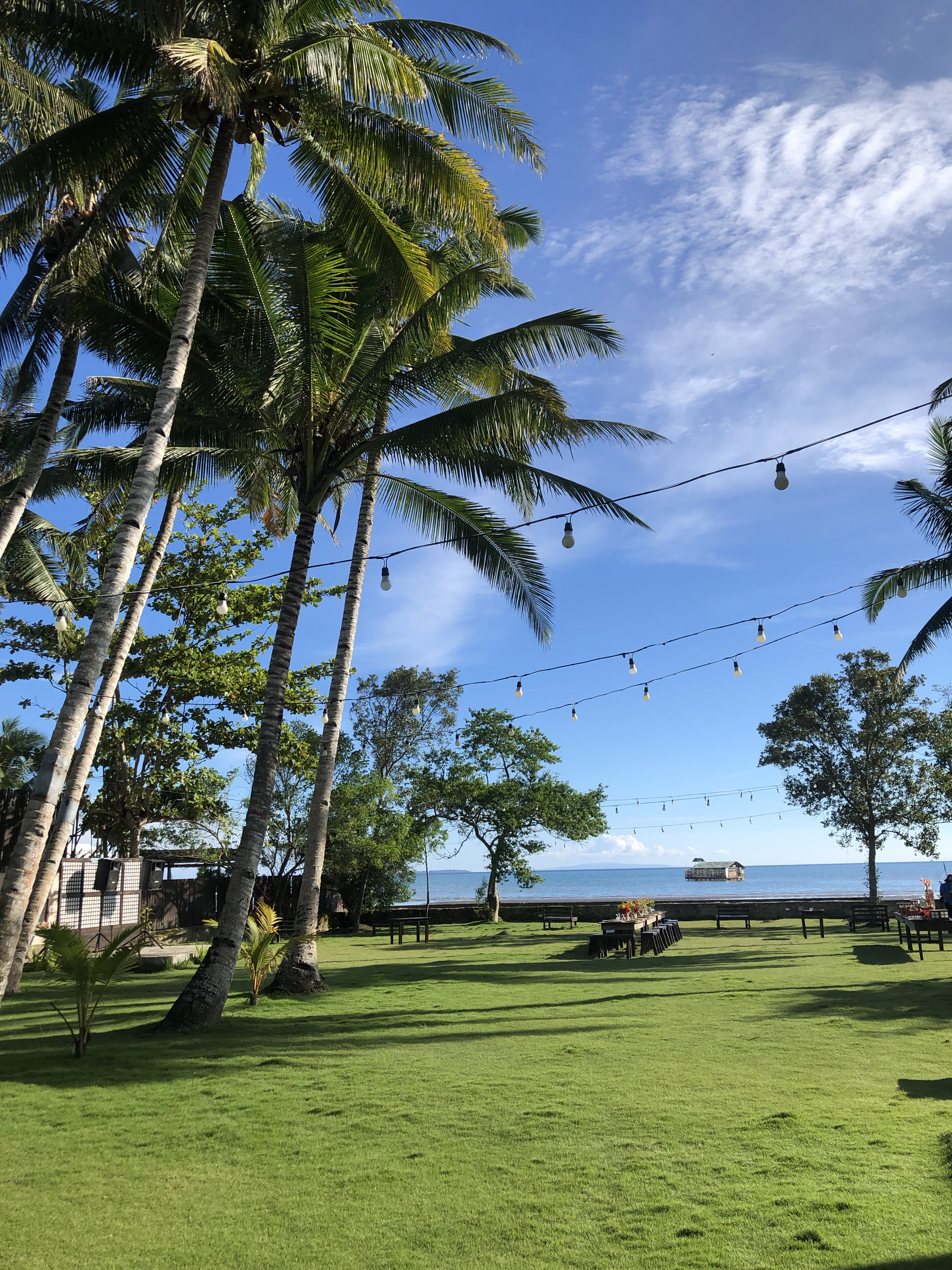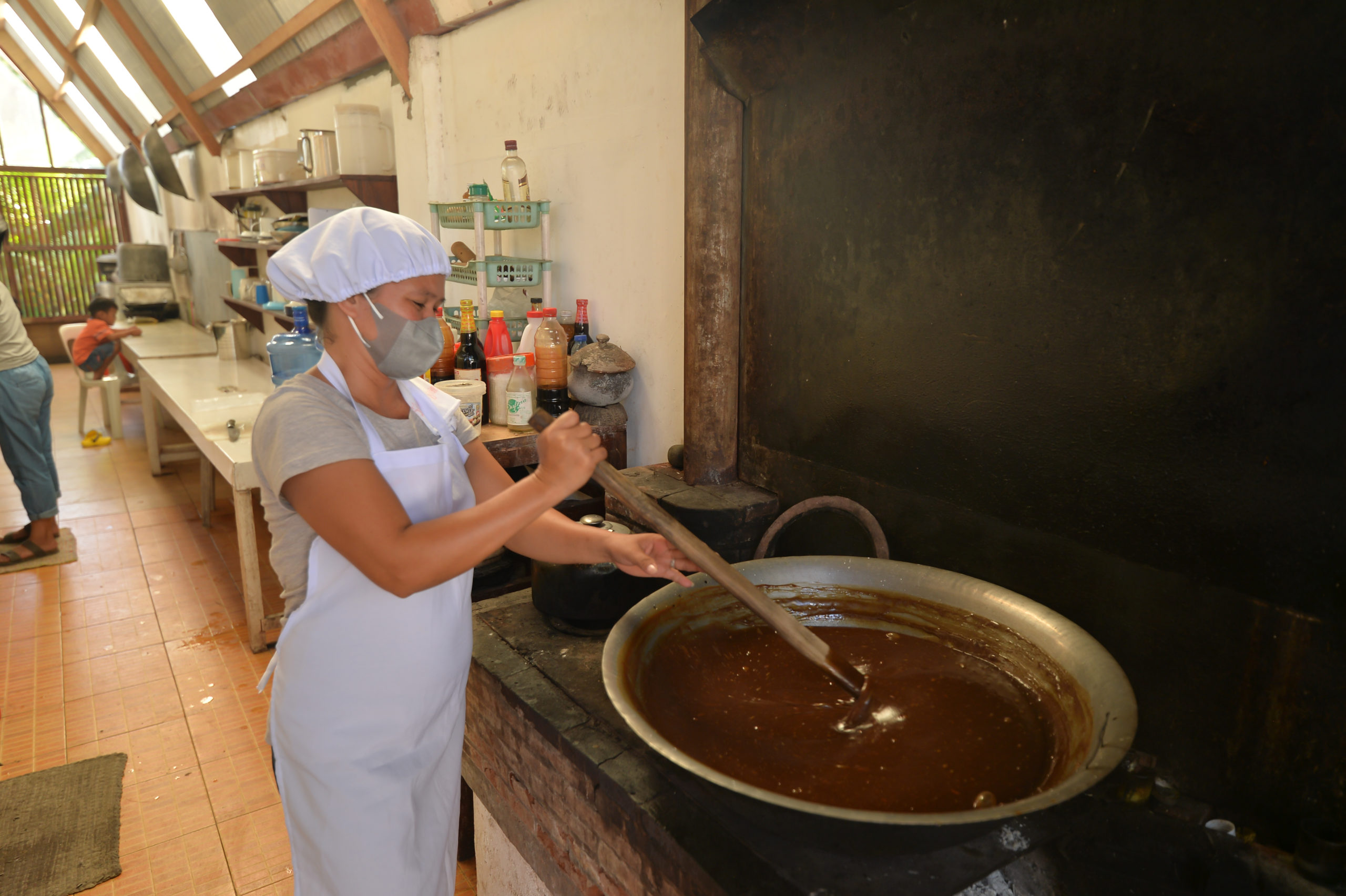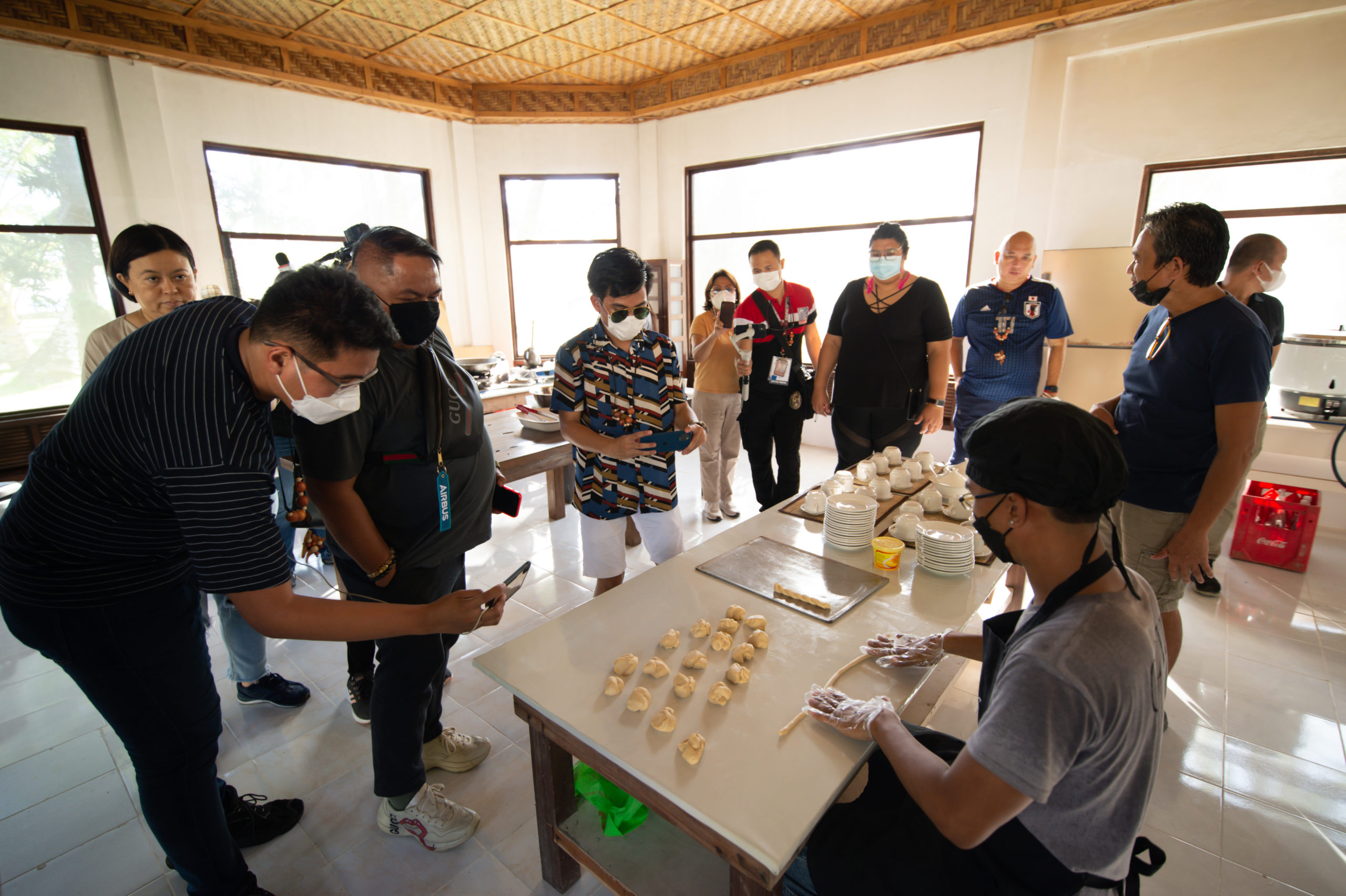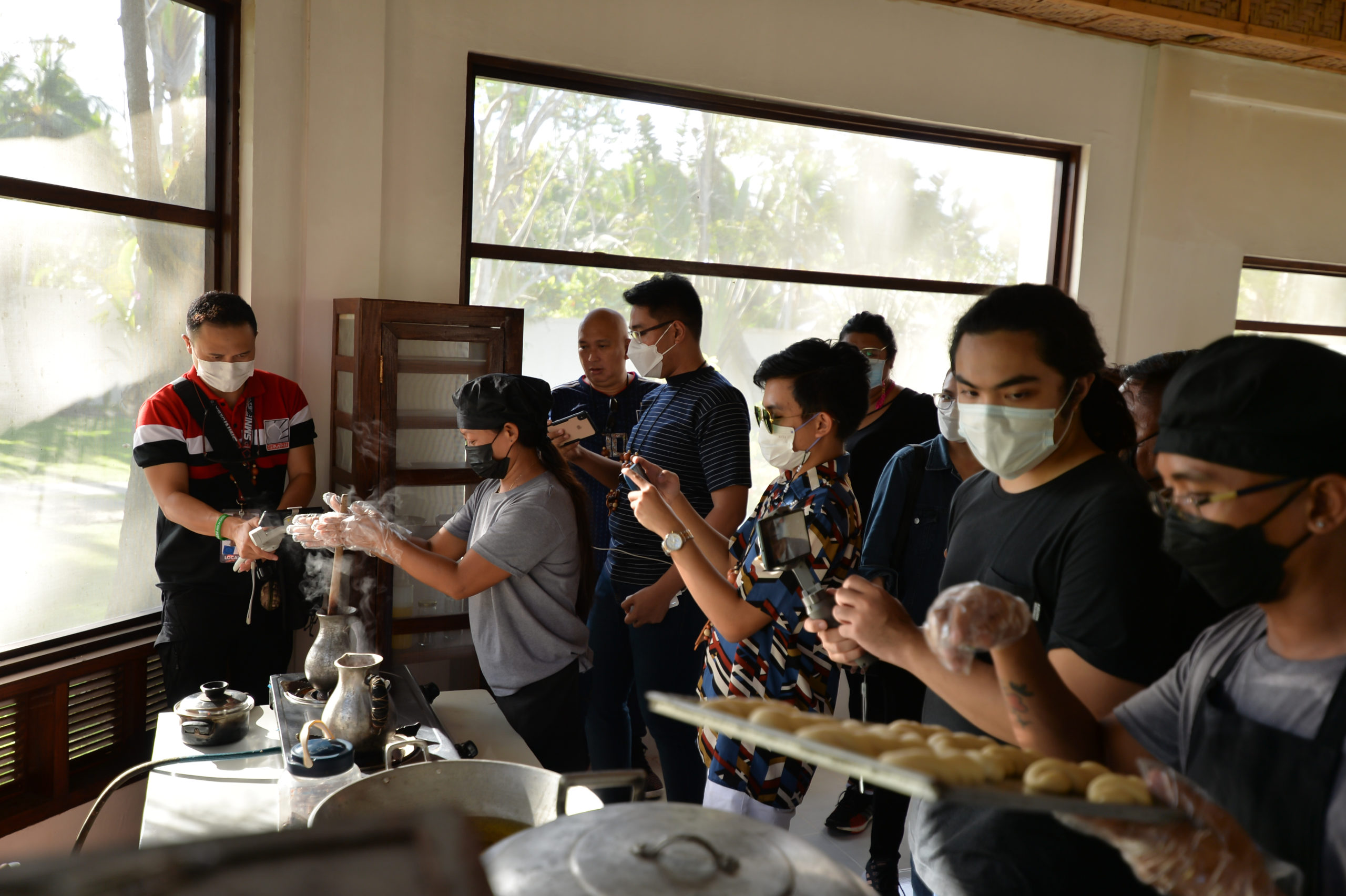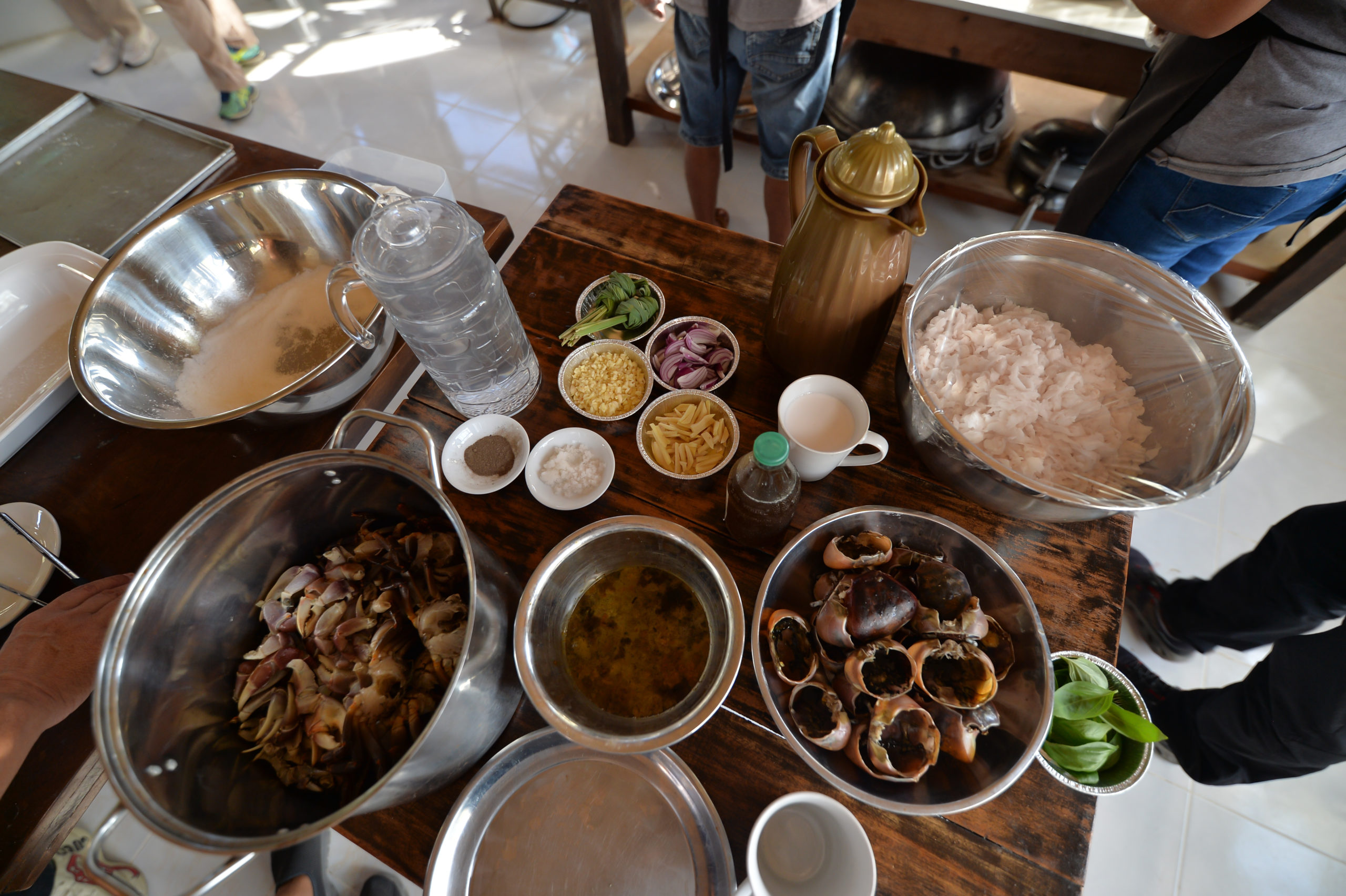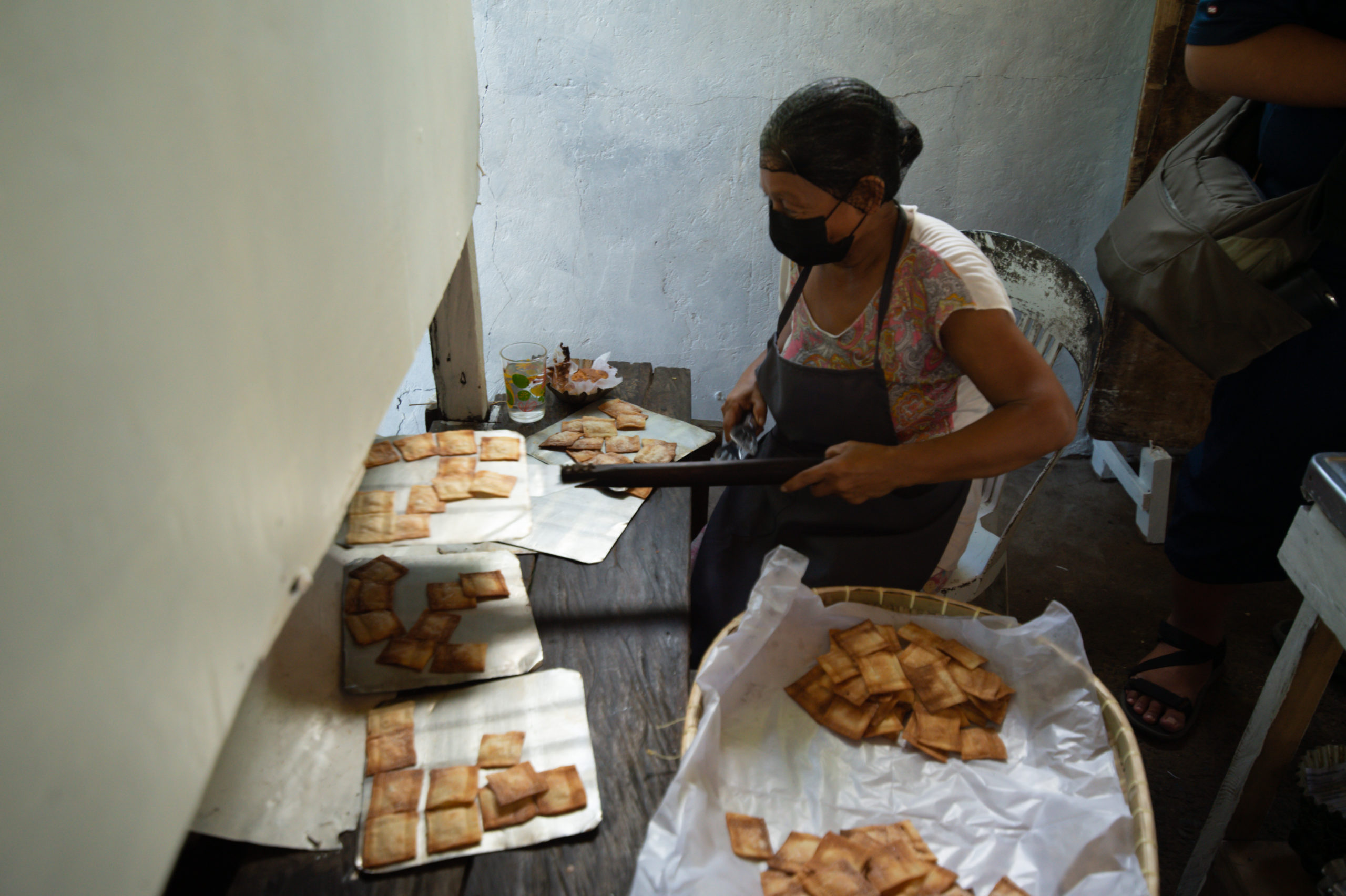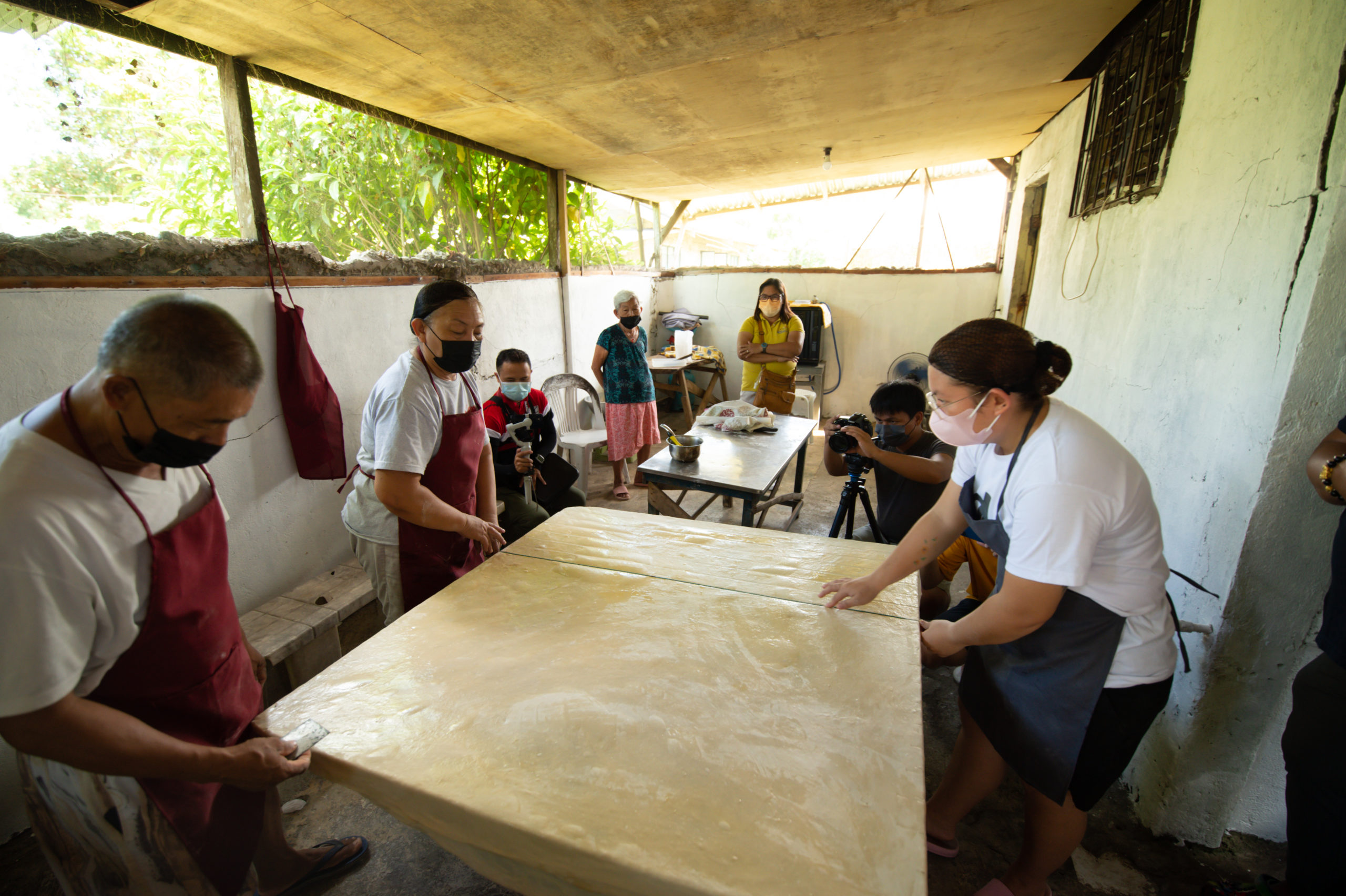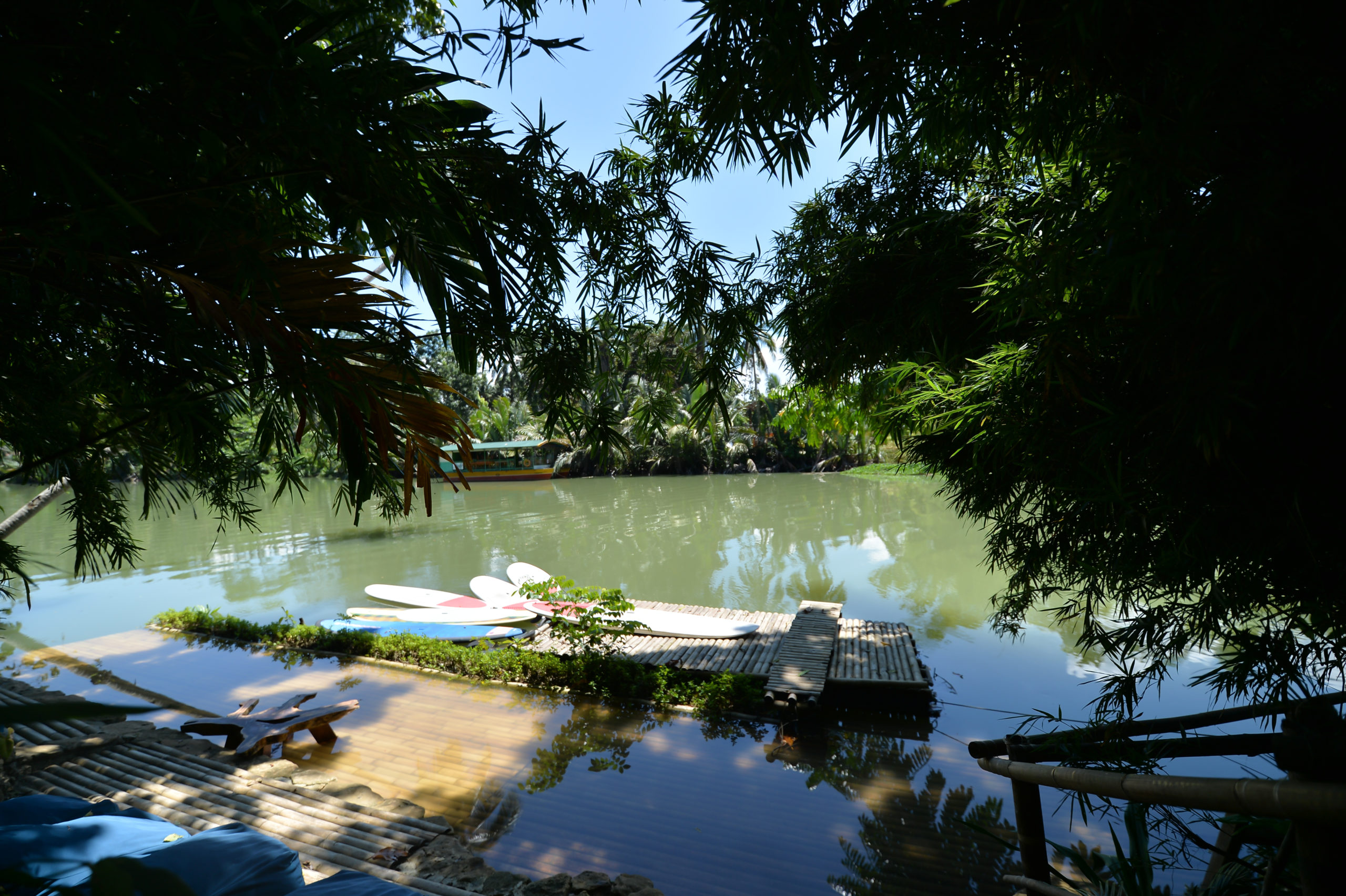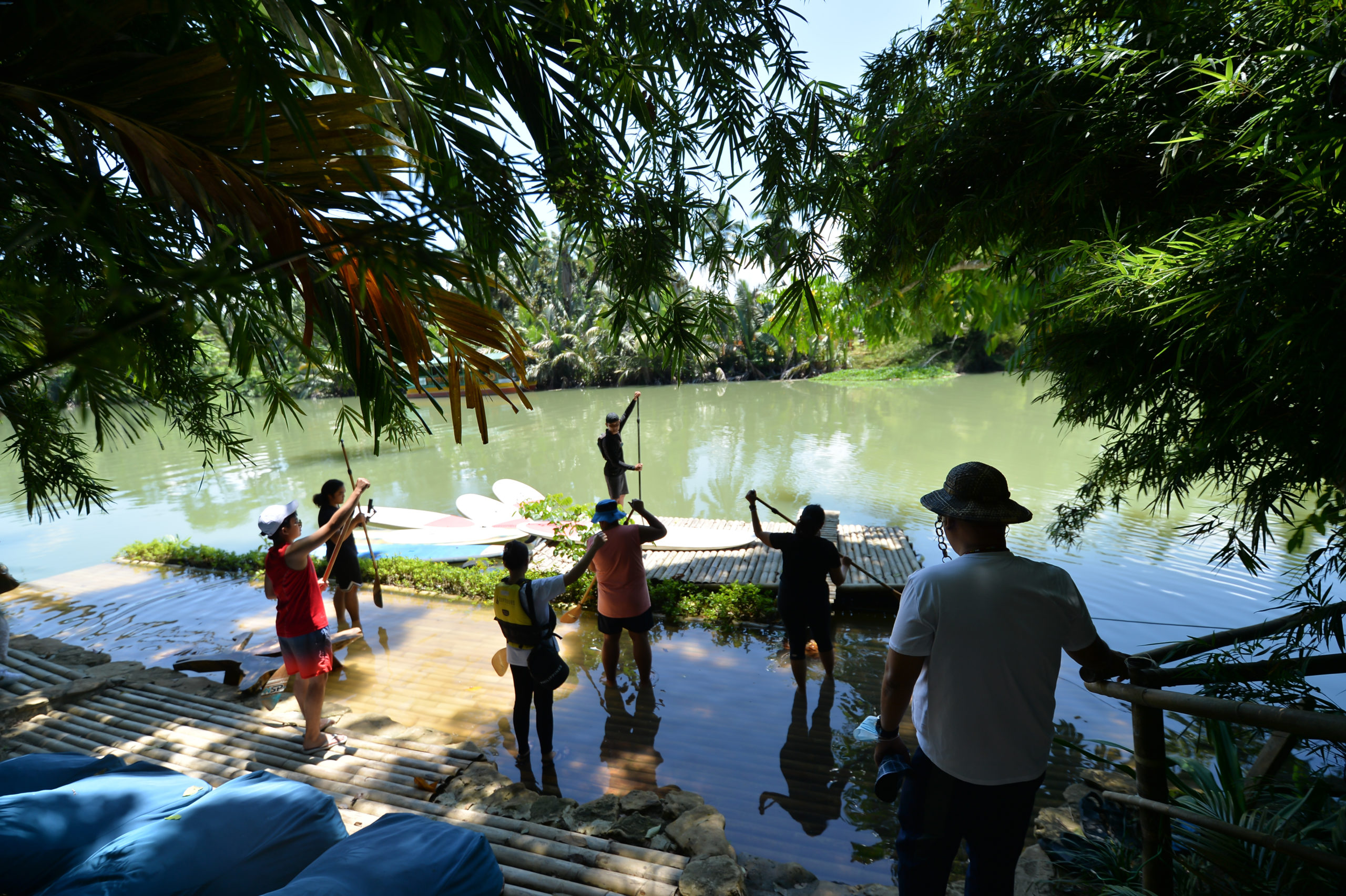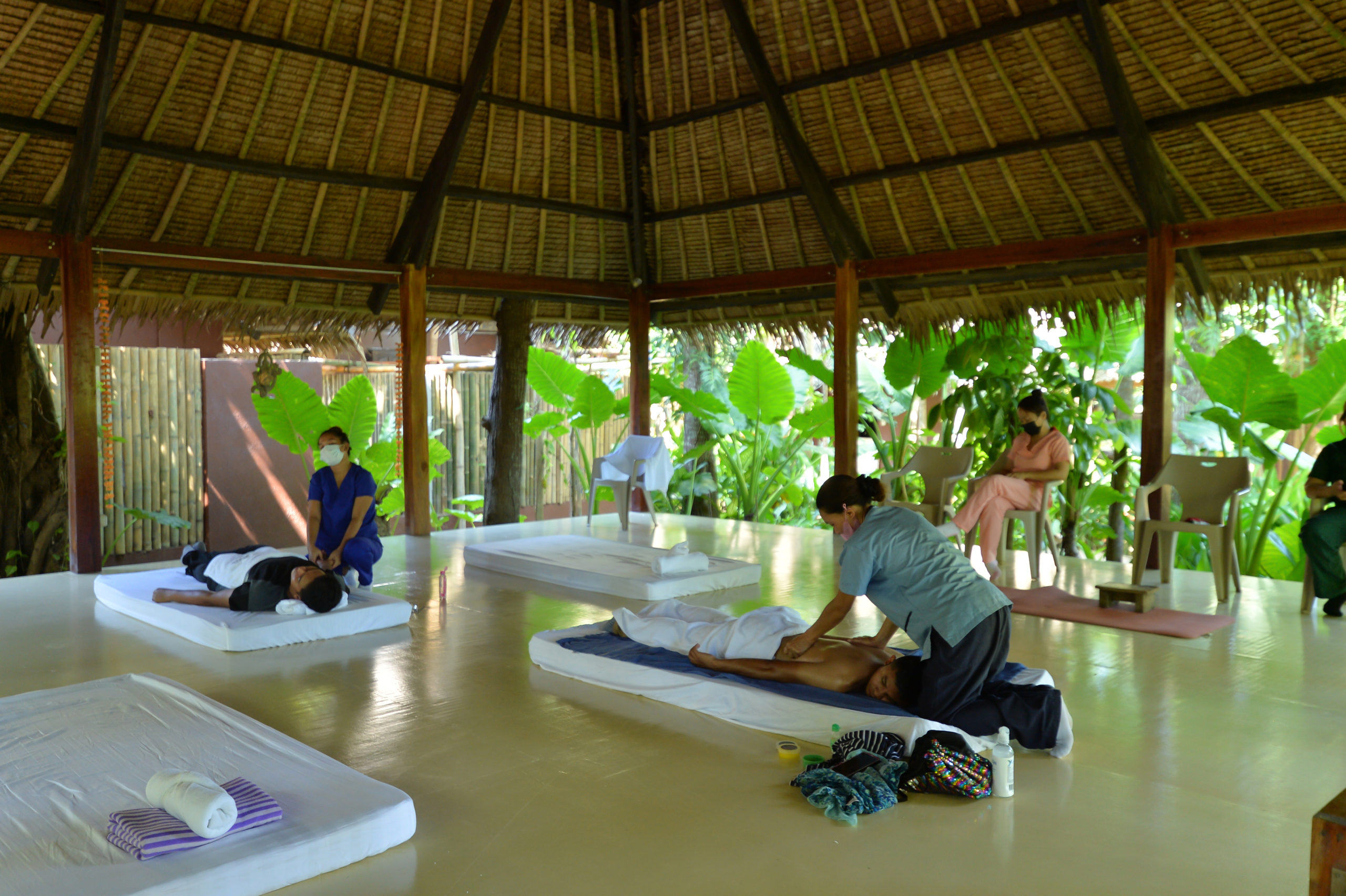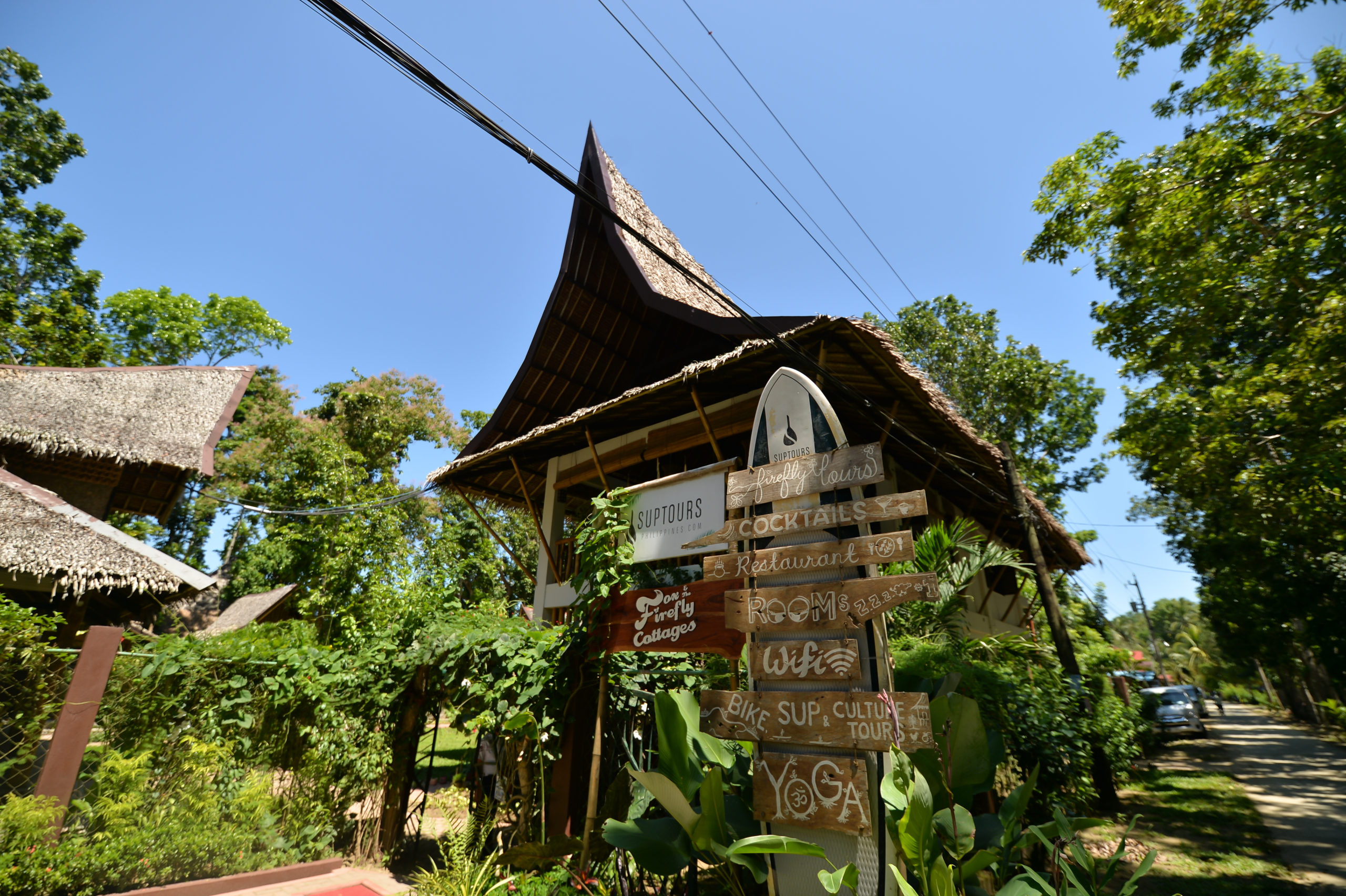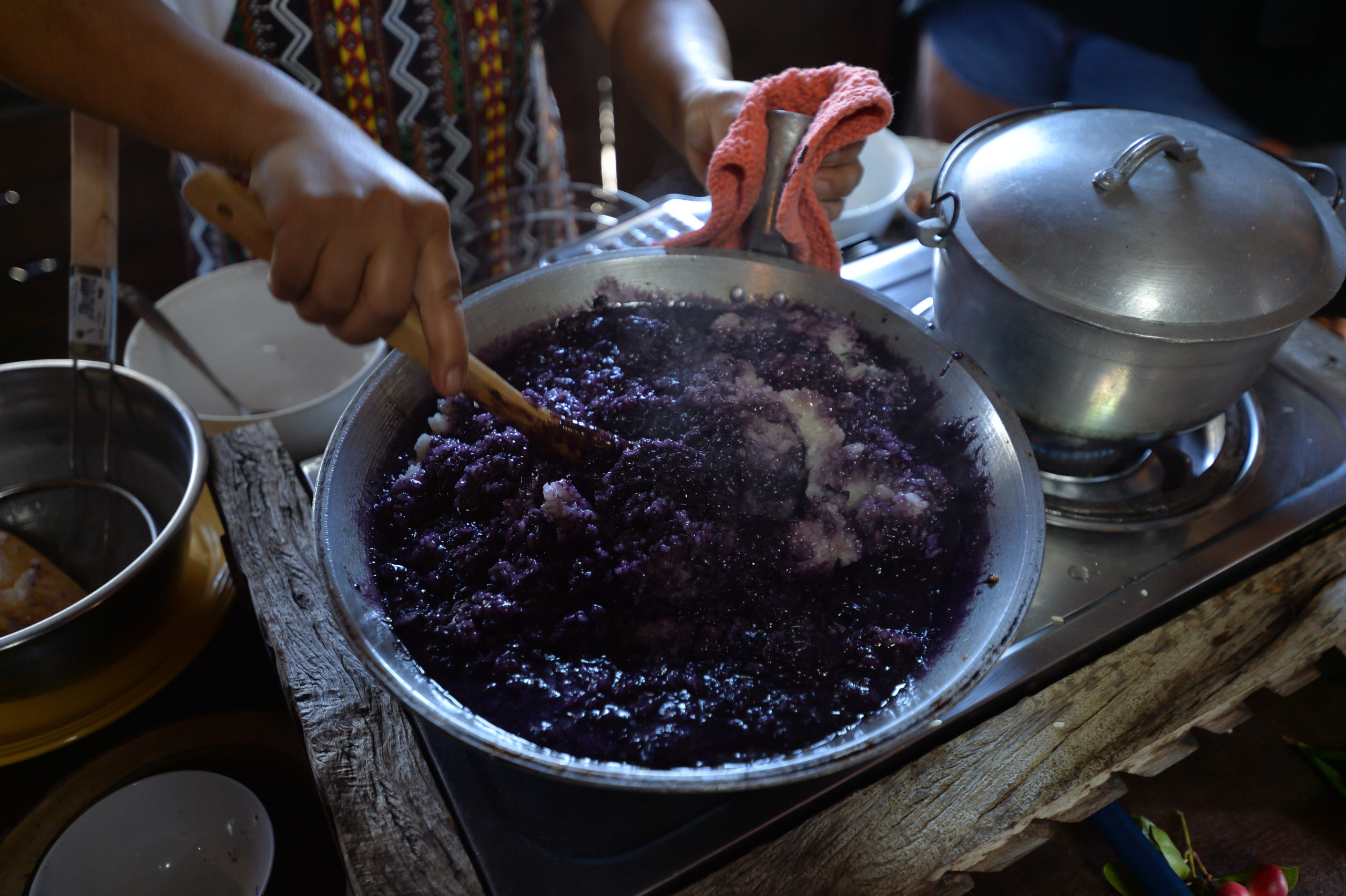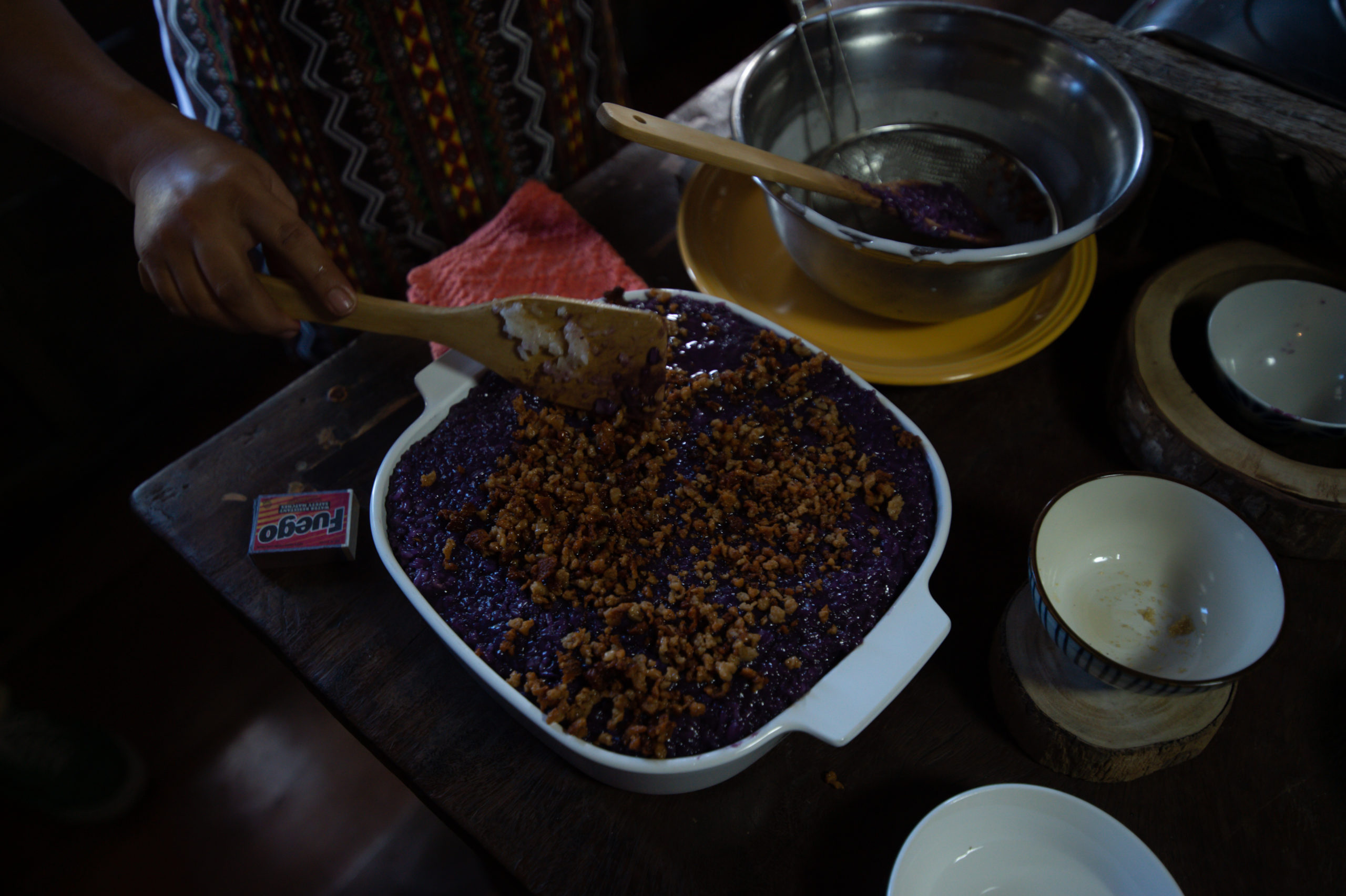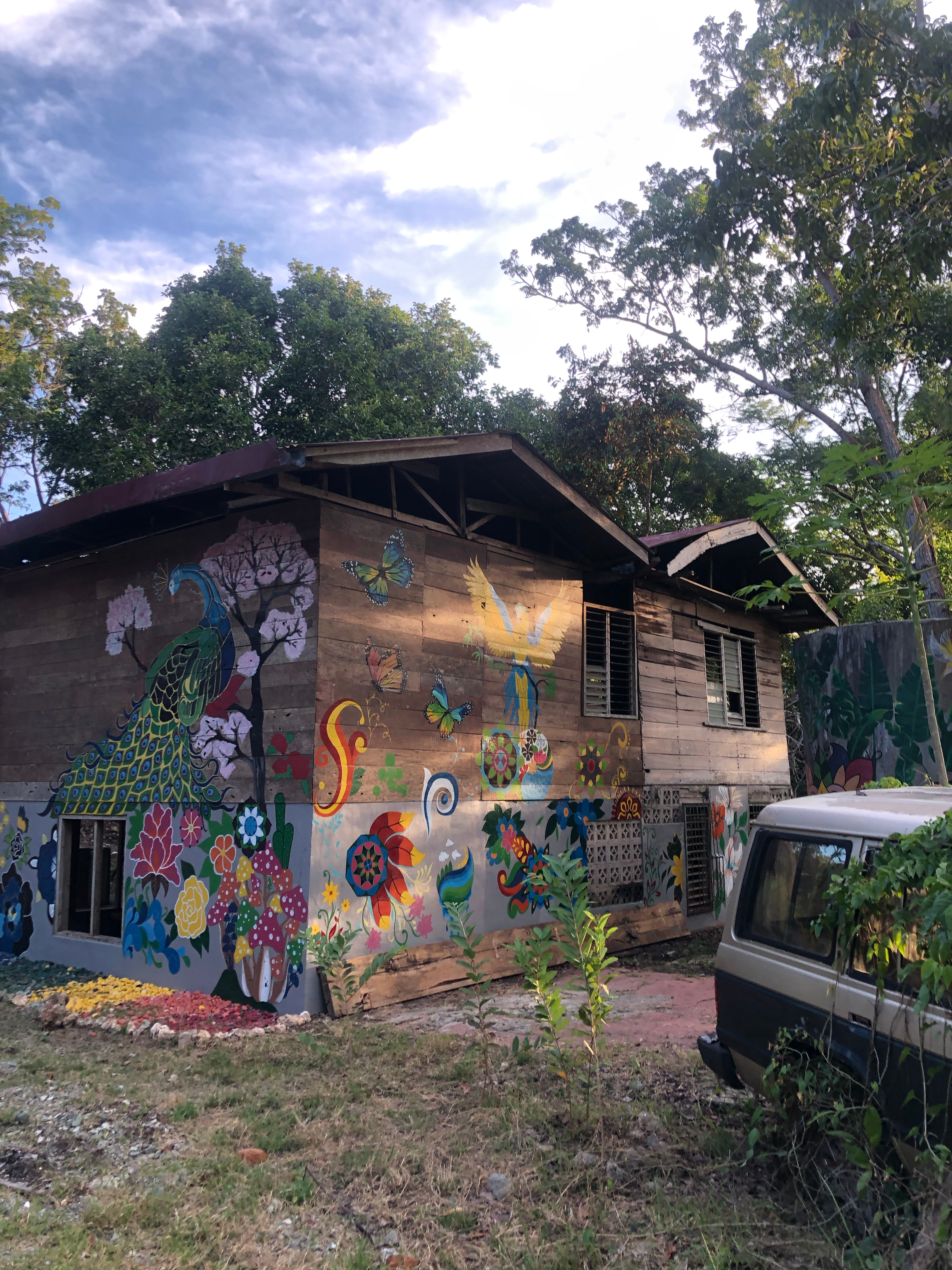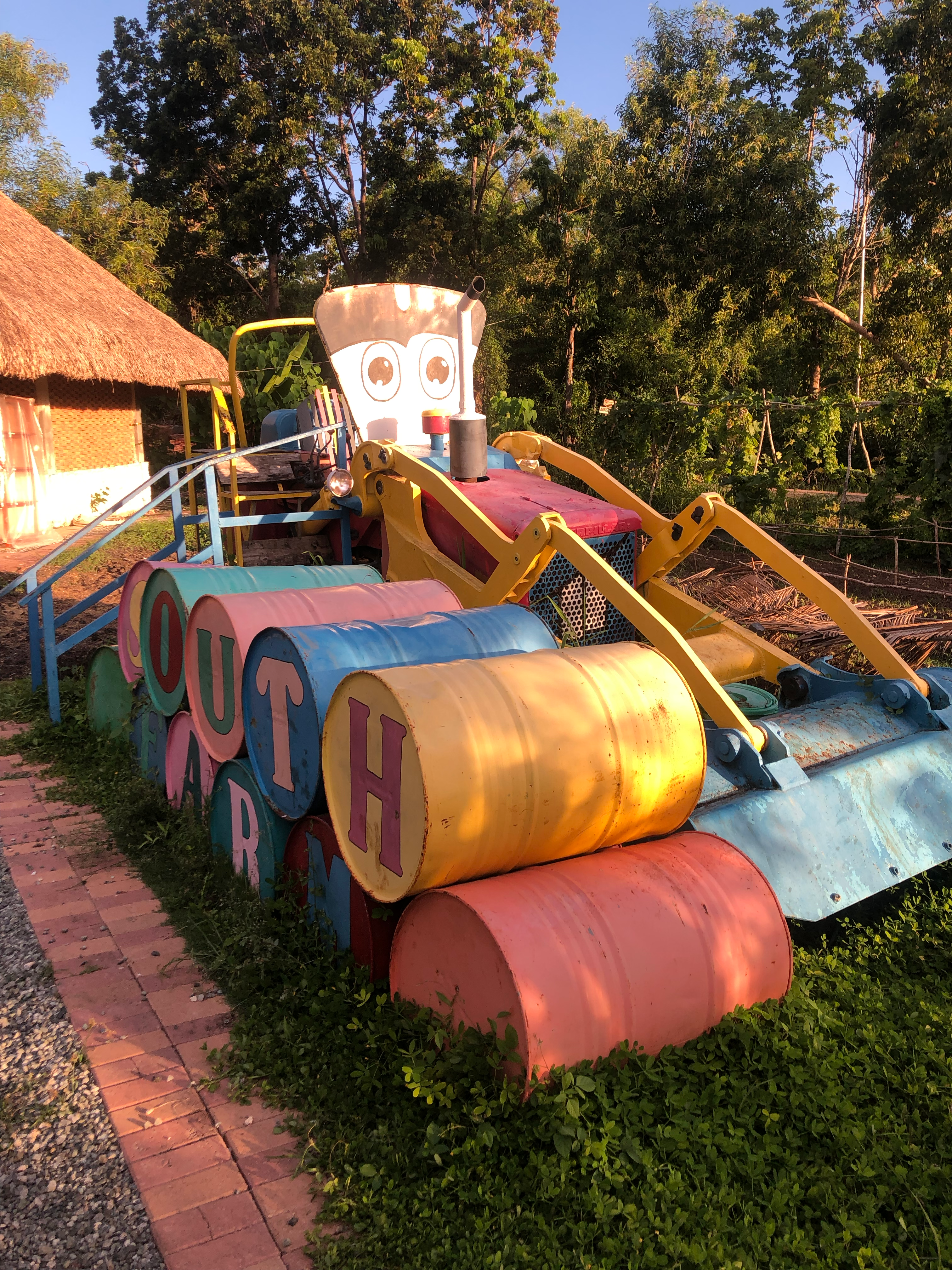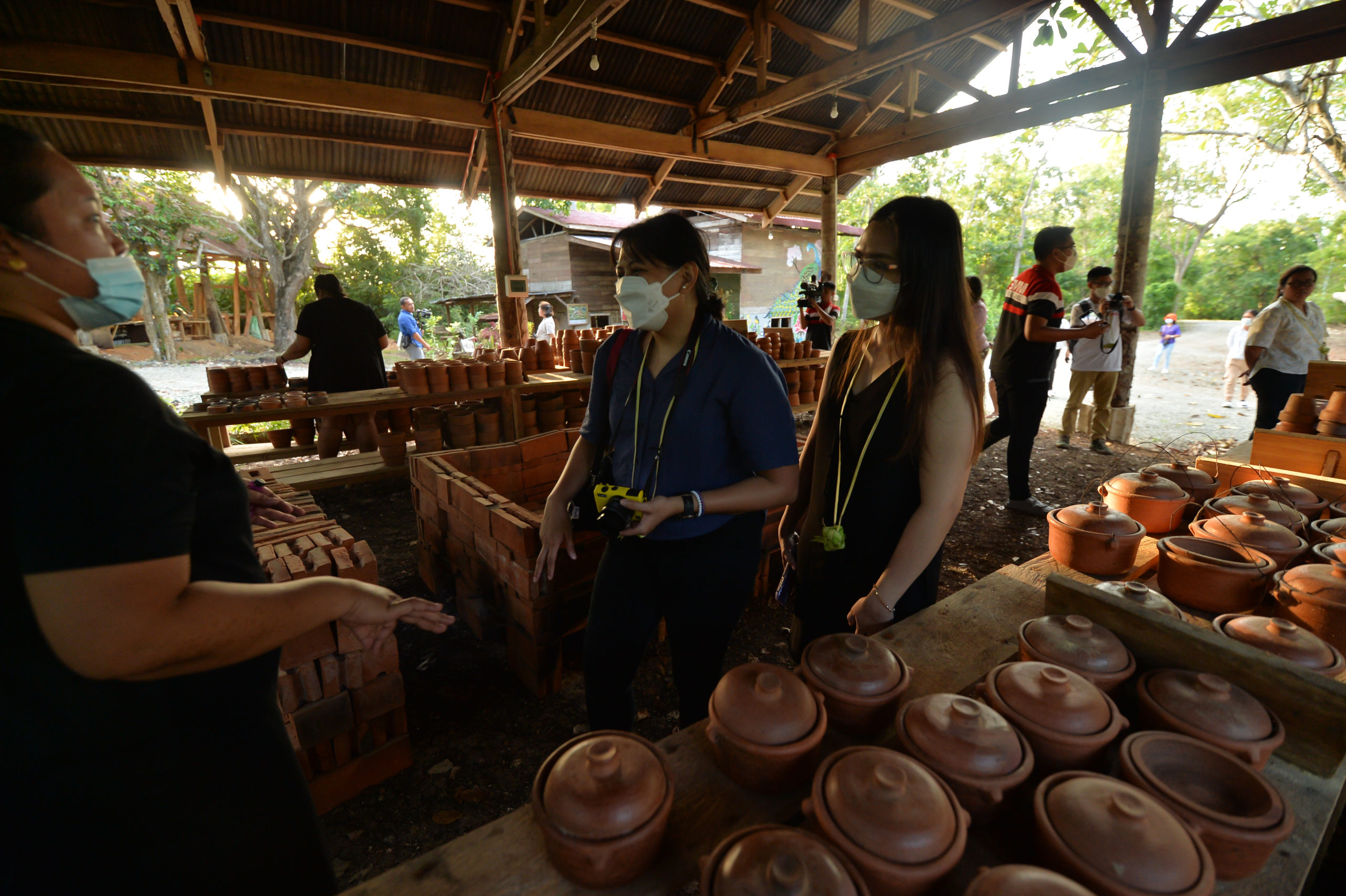Follow the food trail that goes beyond the beaches and the flora and fauna of Bohol – a fun-filled tour for the taste buds featuring heirloom recipes and organic ingredients, locally grown and handmade with love by generations of Boholanos.
DAY 1
A Mushroom Experience
The tour’s first destination was in the town of Corella for a trip to Green Thumb Farms. This organic farm owned and operated by Ms. Rona Denque, specializes in growing and producing white and pink oyster mushrooms. The idea was born from the desire to promote the practice of healthy eating and to offer something new to the market. After much trial and error, Green Thumb Farms has paved the way for Bohol’s growing mushroom niche, supplying restaurants and resorts around the island. In the farm’s Al Fresco restaurant, oyster mushrooms are the main ingredient, picked fresh straight from the backyard and transformed into a variety of dishes. The specialty: Mushroom Sisig best paired with a glass of fresh Corella Ube shake.
A Feast for the Eyes
After a healthy farm-to-table meal, the tour’s next stop was at the Sta. Monica Parish Church in Alburquerque, or ‘Albur’ as the locals call it. This beautifully-restored church, which is now a National Historical Landmark, was inaugurated in 1869 and features centuries-old wooden pillars that were soaked in saltwater to stand the test of time. The church’s main attraction is the masterful wood carvings of artist Arseno Lagura Jr.. After the church was damaged by the earthquake of 2013, Lagura and his team of carvers recreated the retablos, pulpit and altar by hand-carving massive pieces of Molave wood in a grand showcase of local artistry and craftsmanship. Adjacent to the church is the museum, where pieces of the original ceiling paintings by Cebuano master Rey Francia are stored.
A Story of Salt
A few kilometers away, still within the town of Albur, is the site of Bohol’s last ‘asindero’, the maker of the famous ‘Asin Tibuok’, Bohol’s heritage salt. The last of his kind, Manong Nestor Manongas explained the long and laborious process of creating the salt. First, coconut husks are soaked in saltwater for days and then dried before burnt to ashes in large batches over a controlled fire. The ashes are then placed in large containers to filter the saltwater to create a highly-concentrated brine. The brine is poured into specially-made clay pots over a wood fire continuously for 8 hours until it dries up completely, resulting in a salt orb in various shades of white, grey and brown and weighing roughly a kilo. Only 120 pieces of ‘Asin Tibuok’ are made per batch and these are usually sold out for weeks.
Sweet Treats and a Side of Kagang
A final stop at Julio’s Bed and Breakfast in Loay Bay gave guests a chance to experience how to make ‘Siakoy’. The popular snack, a local version of a sugary donut, was paired with ‘Tableya Sikwate’ native hot chocolate made using the traditional ‘batirol’ or wooden whisk. Next on the itinerary of activities was ‘Kagang’ (land crab) harvesting. After catching the crabs with a traditional bamboo trap, Julio’s proprietor, Mr. Pio Araneta, demonstrated how generations of locals in the area prepared ‘Nilubihang Kagang’, an heirloom recipe which incorporated the crab fat with fresh coconut meat and water plus herbs and spices. While waiting for the ‘Kagang’ to cook, the President of the Albur Calamay Makers Association, Ma’am Lily Busano showed guests how to prepare and cook Bohol’s most popular pasalubong, ‘Calamay’. The sticky, sweet delicacy is made of grated coconut, coconut water, brown sugar, muscovado sugar, peanuts, and ground glutinous rice or ‘pilit’. The thick sugary mix is stirred continuously in a giant wok for up to 8 hours to create the smooth, sticky consistency. Once the ‘calamay’ is cool, they are transferred into the signature ‘bagul’ or coconut shell container. The day ended with a sunset dinner and cocktails by the beach with a buffet spread of pork barbecue, grilled fish, tortang talong, crispy pata, fresh vegetable soup or ‘Utan Bisaya’, hanging rice or ‘puso’, a salad of ‘guso’ (seaweed) and ‘lato’ (sea grapes), and of course the ‘Nilubihang Kagang’. Dessert consisted of ‘Turon’ (banana spring rolls) and ‘Camote’ (sweet potatoes) with ‘Latik’ (coconut caramel). And just like that, the day is done. Guests were taken back to the resort for rest, relaxation and digestion to prepare for another day of eating.
DAY 2
A Tale of Tinapay
The second day of the tour kicked off with a visit to Bohol’s last ‘Tinapay’ makers, Mrs. Cecilia Oroc of Cecilia’s Tinapay Crisp & Old Fashion Cookies. Her family is the last of what used to be a booming industry in Tagbilaran City decades ago. Together with her 86-year old mom, and daughter, she continues to bake the traditional ‘Tinapay’ – a biscuit made from layers of dough and pork lard to create a thin, crispy, sugar-coated treat. It is the family’s goal to preserve the recipe that was handed down from Mrs. Cecilia’s great, great grandmother so that generations to come can still enjoy this heirloom pastry. Aside from the ‘Tinapay’, Mrs. Cecilia also makes old-fashioned cookies,’Torta’, and other desserts and snacks.
Wellness Activities and Vegan Delights
Next stop was at the Fox & The Firefly Cottages, a nature resort located along the banks of the Loboc River. Guests were welcomed with a glass of fresh, homemade ginger and lemon Kombucha while waiting for the relaxing massage and Stand Up Paddle (SUP) ride along the Loboc River. After the relaxing and thrilling activities, a healthy, organic lunch was served. Aside from the Chicken Halang-Halang soup with coconut milk and the Maranding Chicken, a dry coconut curry with ‘palapa’ (a Maranao condiment), the rest of the items on the menu were vegan. The highlights of the lunch were the Vegan Kare-Kare, Signature Pomelo Salad, and the unique Coco Buko salad.
An Antique Cafe
After the healthy lunch, off the tour went to Baclayon to visit Crescencia’s Cafe for more food. Nestled inside the ancestral house of the owner’s great grandfather Narciso Ginete, Crescencia’s Cafe offers a nostalgic and homey experience, the perfect venue for traditional merienda with old wooden tables surrounded by antique interiors and accessories. Before the snack tasting was a cooking demonstration of the cafe’s specialty – ‘Ube Biko’ made with Bohol’s special aromatic Ube Kinampay, freshly mashed and mixed into the creamy biko concoction. Guests were then served the Ube Biko, topped with grated cheese and toasted coconut bits with a side of ‘Saging PInaypay’, deep fried bananas coated with sugar, ‘Puto Maya’, another traditional snack made from glutinous rice and a cup of hot ‘Tableya Sikwate’.
A Hands-On Farm Excursion
The last destination and grand finale of this Bohol Culinary Adventure is the true definition of farm-to-table. The tour ended at South Farms in Panglao, a 9-hectare organic farm that supports handmade and handcrafted delicacies and products to promote the local economy and provide livelihood to the people in town. The farm is a nature-themed, family-oriented tourist attraction with tons of activities for visitors including a visit to the Artisans’ Village to see the raffia and basket weaving area, pottery barn for terracotta pots, carpentry area, and coco shed for homemade Virgin Coconut Oil and ‘Suka PInakurat’ -making and of course, tasting. Guests were able to experience planting lettuce at the Farmers’ Village, playing with Rabbits and Guinea Pigs, going horseback riding and seeing all the other farm animals including chickens, ducks, turkeys, pigs, goats, sheep, cows and more. After an unsuccessful round of Tilapia fishing, next on the itinerary was grilling corn skewers over a huge bonfire. Finally, dinner was served with fresh grilled prawns, fried King Fish, different salads (freshly-picked from the farm) and dressings, chicken halang-halang, pork humba and mango Maja Blanca for dessert. The food trip drew to a close with full bellies and rich memories.
Food is without a doubt the love language of Filipinos. With this unique Food Tour Series organized by the Department of Tourism Central Visayas, local visitors and tourists are treated to a shared history of culinary experiences that showcases the culture of Bohol and traditions of Boholanos. As they say in Bohol, Mangaon Ta!
